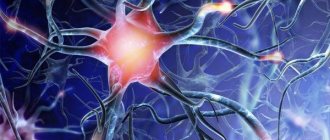Modern people are increasingly saving on sleep, devoting this most important time for recuperation to watching movies, working or night gatherings. But healthy sleep helps the brain reboot, strengthens the immune system and normalizes the psycho-emotional state. The condition of the skin, mood during the day, and the body’s resistance to stress and illness depend on it.
Sleep, as a physiological process, consists of two phases that are repeated 5-7 times per night. If the body does not pass them during a healthy night's sleep, fatigue, apathy and health problems may appear.
slow sleep
Stage I. During this state of sleep, interesting thoughts and new ideas arise in the subconscious of a person. He dozes more than he sleeps. This state lasts approximately 5–10 minutes.
Stage II. On it, a person’s consciousness completely turns off, and a full-fledged sleep occurs. In this phase, which lasts approximately 20 minutes, the auditory analyzers become sharper. At this time, you can easily wake up from minor noise, movement in the bed, and the like.
Stage III. It is a kind of continuation of the second phase and is deeper. In this case, the person is no longer awakened by minor rustles and sounds. The stage lasts approximately 45 minutes.
Stage IV. Characterized by very deep sleep. It is much more difficult to wake a person than in the third stage. Vivid dreams are noted, and some people suffer from sleepwalking. Usually, when a person enters the waking state, he does not remember the dreams he had in this phase. This state lasts approximately 45 minutes.
How to fall into deep sleep and wake up rested
You can and should increase the time of the deep phase by following the following recommendations:
- Go to bed and wake up at the same time.
- A few hours before a night's rest, the body should receive a load. In a state of fatigue, a person is more likely to fall asleep, but the body must be tired, as opposed to excited.
- If you have become a habit of watching movies before going to bed at night, you should not choose thrillers and horrors. Calm music also greatly helps in timely immersion in a sleepy state.
- Avoid overeating, drinking coffee, alcohol, and drinks that will increase energy. It is not recommended to eat chocolate or pastries before a night's rest. It is also undesirable to eat fruits, since fiber takes a long time to digest.
- More than 2 hours should pass from the last meal to falling asleep. Otherwise, the stomach will digest food, which will not allow a person to get a good night's sleep.
- It is necessary to consciously make the choice of bed and underwear, which should be made from natural fabrics. It is especially important to choose the right pillow, paying attention to its size, filling, and density.
- The room should be well ventilated.
Extraneous sounds that interfere with normal rest and irritating light should be excluded.
Meditation
Some disorders may be triggered by factors that require treatment with medications, but do not rush to take advertised pills. Meditation before a night's rest helps a person find peace, sets him up for relaxation and inner silence.
During relaxation, a person breathes deeply and measuredly, which helps saturate the body with oxygen. Meditation allows a person to wake up in the morning full of strength and health. Recently, to normalize falling asleep through meditation, Nadezhda Loskutova’s relaxation technique is often used.
Massage
A safe method of treating sleep disorders is massage. You can learn to massage your feet to normalize sleep yourself. Reflex massage has no contraindications. The use of Chinese gymnastics for insomnia, including massage of the abdomen, head, neck, and ears, is effective.
Massage promotes relaxation and deep sleep
Hypnotherapy
If all the doctor’s recommendations for improving sound sleep have been exhausted, and you don’t want to take pills, you should try to get rid of the problem with hypnotherapy. During a hypnosis session, the doctor instructs the patient to remain in a state of healthy sleep throughout the night. Many people use audio recordings of psychotherapist Andrei Rakitsky to plunge into a deep phase.
It should be noted that distance therapy should be carried out under the supervision of a physician.
REM sleep
REM sleep is classified as the fifth stage of sleep. At this time, the state of the sleeper is as active as possible. But, despite this, his muscles are paralyzed and the person is in one position. The subconscious mind works well enough that you can remember all your dreams.
If you wake up a sleeper during the fast phase, he will be able to tell all his dreams in the most colorful and vivid detail.
At the fourth stage, it is quite difficult to wake up on your own. If you try to wake a sleeping person, you will need more effort. Some experts note that a sharp transition from such a period to wakefulness can negatively affect the psyche. REM sleep takes about 60 minutes.
Adequate sleep is essential for all people, because it helps maintain strong nerves, high immunity, and even an optimistic outlook on the world around us.
Diagram of the night cycle by phases and stages of sleep
In terms of sleep cycles, our night goes like this:
- First comes stage 1
slow-wave sleep, which means we move from wakefulness to sleep through drowsiness. - Next, we sequentially go through stages 2, 3 and 4
. Then we move in the reverse order - from delta sleep to light sleep (4 - 3 - 2). - , REM sleep
occurs . Due to the fact that it is the last to be activated in the cycle - after all other stages have passed - it is sometimes called phase 5 or stage 5, which, strictly speaking, is not entirely accurate, because REM sleep is completely different compared to slow wave sleep . - Then we return to stage 2
, and then we again plunge into delta sleep, then light, then fast, then light again... And so the change of phases and stages goes in a circle. Another option is that after REM sleep, awakening occurs.
Optimal wake-up time
Considering the characteristics of awakening in each phase, it is easy to understand that it is better to wake up during REM sleep. How to guess when this phase will come? A simple calculation will help. It is enough to know how long each stage of the phase lasts; you can calculate at what point it will turn into REM sleep. The cyclicity of the sleep process will help to calculate the time of onset of the required phase in a period close to the hour of normal awakening. All that remains is to set the alarm clock for the desired hour, and the coming day will be filled with cheerfulness and activity.
What time should you go to bed or wake up to feel alert during the day? The optimal time and possible duration of sleep will help you calculate the sleep calculator
Literature
- “Mint chill”: why menthol creates a feeling of coolness in the mouth;
- Tkachenko B.I. Normal human physiology (2nd ed.). M.: Medicine, 2005. - 928 pp.;
- Vazquez J., Lydic R., Baghdoyan H. A. (2002). The nitric oxide synthase inhibitor NG-nitro-L-arginine increases basal forebrain acetylcholine release during sleep and wakefulness. J. Neurosci. 22 (13), 5597–5605;
- Watson C. J., Baghdoyan H. A., Lydic R. (2012). Neuropharmacology of sleep and wakefulness. Sleep Med.Clin. 7 (3), 469–486;
- Schwartz J. R. and Roth T. (2008). Neurophysiology of sleep and wakefulness: basic science and clinical implications. Curr. Neuropharmacol. 6 (4), 367–378;
- Brown RE, Basheer R, McKenna JT, Strecker RE, McCarley RW (2012). Control of sleep and wakefulness. Physiol. Rev. 92, 1087–1187;
- Ohno K. and Sakurai T. (2008). Orexin neuronal circuitry: role in the regulation of sleep and wakefulness. Front. Neuroendocrinol. 29, 70–87;
- de Lecea L., Kilduff TS, Peyron C., Gao X., Foye PE, Danielson PE et al. (1998). The hypocretins: hypothalamus-specific peptides with neuroexcitatory activity. Proc. Natl. Acad. Sci. USA. 95, 322–327;
- Sakurai T., Amemiya A., Ishii M., Matsuzaki I., Chemelli R.M., Tanaka H. et al. (1998). Orexins and orexin receptors: a family of hypothalamic neuropeptides and G protein-coupled receptors that regulate feeding behavior. Cell. 92, 573–585;
- Inutsuka A. and Yamanaka A. (2013). The physiological role of orexin/hypocretin neurons in the regulation of sleep/wakefulness and neuroendocrine functions. Front. Endocrinol. (Lausanne). 4, 18;
- Calm like GABA;
- The molecule of sanity;
- Secrets of the blue spot;
- Serotonin networks;
- Passani M. B. and Blandina P. (2011). Histamine receptors in the CNS as targets for therapeutic intervention. Trends Pharmacol. Sci. 32 (4), 242–249;
- Kumar S. and Sagili H. (2014). Etiopathogenesis and neurobiology of narcolepsy: a review. J. Clin. Diagn. Res. 8 (2), 190–195;
- Bozorg A. M. and Selim R. B. (2015). Narcolepsy: practice essentials, background, pathophysiology. Medscape;
- Liblau RS, Vassalli A., Seifinejad A., Tafti M. (2015). Hypocretin (orexin) biology and the pathophysiology of narcolepsy with cataplexy. Lancet Neurol. 14, 318–328..
Starring: orexin/hypocretin…
Orexin, also known as hypocretin, was discovered in 1998 by two groups of scientists independently of each other.
Luis de Lecea, in his laboratory at Stanford University, first isolated a number of mRNA sequences from the hypothalamus of mice - 38 in total. The attention of the researchers was drawn to sample number 35: this mRNA encoded the precursor of two peptides similar in amino acid sequences to the gastrointestinal hormone secretin tract. Using polyclonal serum to its C-terminal sequence of 17 amino acid residues (hereinafter referred to as AK) to precisely localize and isolate this precursor protein in the hypothalamus, the scientists described two peptides. They named these peptides hypocretins because they are secreted by neurons in the posterior hypothalamus and are homologous to secretin. The study participants also made a number of assumptions regarding the functions of the substances they discovered [8].
Takeshi Sakurai and his team at the University of Texas discovered the two peptides by screening for ligands for two G protein-coupled orphan receptors. Scientists determined the location of the neurons secreting these peptides in the posterior and lateral hypothalamus, and also identified one of their functions: intraventricular administration of these substances to rats stimulated the animals' absorption of food. Because of this effect, these peptides were dubbed orexins (from the Greek ορεξις, which the authors interpreted as “appetite,” although in fact a closer meaning is “desire”) [9].
Later, when comparing AK sequences, it turned out that hypocretins and orexins are the same peptides, and therefore these terms are synonymous.
So, in 1998, two peptides of a new family were discovered by the world scientific community: orexin A and orexin B (Fig. 8). These molecules are formed from a common precursor, preproorexin (PPO). PPO is produced by neurons of the posterior and lateral hypothalamus. Cutting off the N-terminal signal sequence typical of secreted peptides leads to the formation of proorexin, which is cut by proteases into 2 parts - orexin A, 33 AA long, which has 2 disulfide bonds, and orexin B, 28 AA long, which does not have disulfide bonds.
Figure 8. Orexins and their zones of action. a — Comparison of amino acid sequences of mature orexin A and orexin B in humans and some mammals. Identical sequences are indicated in gray. b — “Sphere of influence” of orexins. Orexin A and orexin B are formed from the same precursor, preproorexin. There are two G protein-coupled receptors for them: the orexin-1 receptor, OX1R, and the orexin-2 receptor, OX2R. Orexin A is nonselective for these two receptors, while orexin B acts only through OX2R. Both receptors are expressed by neurons in the posterolateral and pedunculopontine tegmental nuclei (LDT/PPT), dorsal raphe nucleus (DR), and ventral tegmental area (VTA). OX1R is also abundantly expressed by locus coeruleus (LC) neurons and OX2R by tuberomammillary nucleus (TMN) neurons. Figure from [7].
There are also two orexin receptors: OX1 and OX2 (Fig. 9). They belong to the family of G protein-coupled receptors (GPCRs). The sequence of their AKs coincides by 64%. Activation of these receptors leads to an increase in the level of intracellular calcium, which is an element of many cellular signaling pathways. The affinities of orexin A and orexin B for these receptors differ. Orexin A equally activates OX1 and OX2, while orexin B reacts with OX2 several times stronger than with OX1 [7].
Figure 9. Connection of orexinogenic neurons of the lateral hypothalamus with monoaminergic neurons and the receptors through which orexin excites the neurons of each center. Figure from [7].









